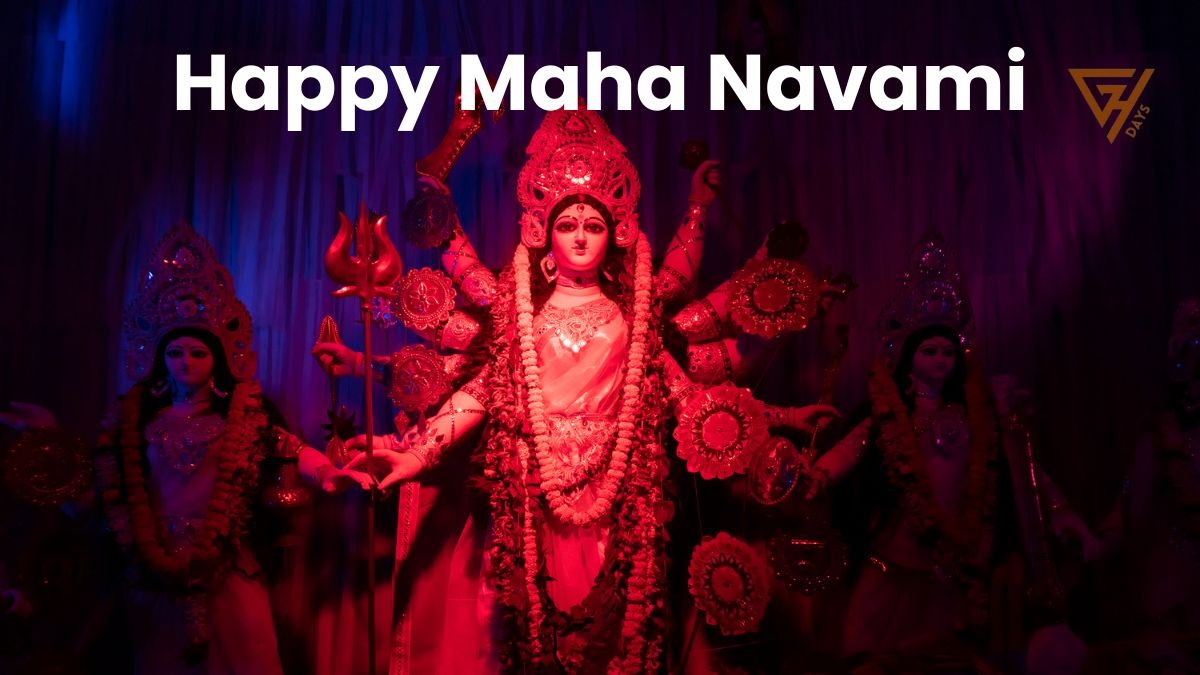Maha Navami Date 2024: Celebrating the Triumph of Good over Evil with Goddess Durga – GHdays
Learn about the significance of Maha Navami, the final day of the Navratri festival. Discover how people celebrate Maha Navami across India, including the grand Durga Puja in West Bengal. Explore the religious rituals, cultural activities, and community events that take place on this auspicious day. Seek the blessings of Goddess Durga and experience the joy and devotion of Maha Navami.
Maha Navami Date 2024: Friday, 11 October
Table of Contents
Maha Navami 2024 Overview
When is Maha Navami 2024?
| Maha Navami Date 2023 | Monday, 23 October |
| Maha Navami Date 2024 | Saturday, 12 October |
| Maha Navami Date 2025 | Wednesday, 1 October |
| Maha Navami Date 2026 | Tuesday, 20 October |
| Maha Navami Date 2027 | Friday, 8 October |
| Maha Navami Date 2028 | Tuesday, 26 September |
Maha Navami 2024 Time in India
On Friday, October 11, 2024, we will observe the significant event of Maha Navami. This will be followed by the conclusion of the Ashwina Navratri Parana on Saturday, October 12, 2024. At precisely 12:06 PM on October 11, 2024, the auspicious Navami Tithi will begin, bringing with it a range of blessings and deep spiritual meaning. The Navami Tithi will elegantly come to an end at 10:58 AM on October 12, 2024, marking the conclusion of this sacred celebration.
Cultural Celebrations of Maha Navami
In addition to the religious observances, Maha Navami serves as a period for cultural festivities and commemorations. Across various regions of India, notably in West Bengal, elaborate processions named ‘Bisarjan’ are orchestrated on this occasion. Magnificent parades carry idols of goddess Durga to nearby rivers or bodies of water for immersion, accompanied by musical performances, dancing, and fervent worshippers.
Beside the processions, diverse cultural activities and displays are arranged during Maha Navami. Traditional dances such as Garba and Dandiya Raas are executed by both men and women, presenting their colorful garments and synchronized movements. These cultural showcases unite communities and enhance the celebratory ambiance of Maha Navami.
Regional Variations of Maha Navami
Maha Navami is observed with distinct regional customs throughout various parts of India. In certain areas, young girls are venerated as representations of the goddess during this day, a ritual known as ‘Kanya Pujan.’ These girls are perceived as bearers of divine energy, and as a sign of reverence, their feet are washed, decorated with sacred symbols, and presented with appetizing meals.
In other regions, Maha Navami is linked to the reverence of animals. Cows, elephants, and other animals are adorned with garlands and worshipped to symbolize fertility and prosperity. This tradition underscores the profound respect for nature and all living creatures within Hindu traditions.
The Significance of Maha Navami
Maha Navami is considered a highly auspicious day devoted to the worship of Goddess Durga. It is believed that on this day, Goddess Durga defeated the buffalo demon Mahishasura, signifying the triumph of good over evil. Devotees offer prayers, perform rituals, and seek the blessings of the divine mother on this day.
Many people observe fasts and visit temples to seek blessings and participate in special ceremonies. The day is also marked by the performance of various cultural activities, including traditional dances and music.
Maha Navami Celebrations across India
Maha Navami is celebrated with great enthusiasm and joy in different parts of India. In West Bengal, it is a part of the grand Durga Puja festival, where beautifully crafted idols of Goddess Durga are worshipped and immersed in water on the final day. The streets come alive with vibrant processions, cultural performances, and elaborate decorations.
In other parts of the country, Maha Navami is celebrated with religious fervor. Temples are adorned with flowers and lights, and devotees gather to offer prayers and seek blessings. Many people also organize community events, including bhajans (devotional songs), kirtans (religious discourses), and cultural programs.
Overall, Maha Navami is a day of immense joy and devotion, where people come together to celebrate the divine power of Goddess Durga and seek her blessings for a prosperous and harmonious life.
